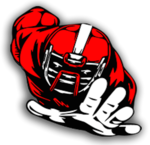By Michael Weinstein, mike@zybeksports.com
Several thousand athletes compete for a few positions on college teams. The combine physical performance test scores are often used in the screening process to narrow the field of athletes. Achieving the absolute best numbers possible for an individual athlete is of paramount importance to the athlete’s recruitment success. After making the short-list, meeting or exceeding the numbers presented on the applications will become even more important. There are very few excuses a coach will accept if a prospective athlete claims better numbers than they can achieve in the actual tryouts.
Preparing for the combine tests is similar to preparing for the SAT or ACT college entrance tests. Students who earn top scores on the college tests have prepared by taking practice tests, attending test preparation training programs, and extensive studying to increase core subject knowledge. The practice tests and professional instruction give the student a competitive edge to increase test scores by increasing confidence and providing techniques for achieving the best score possible.
Athletes should use the same process to prepare for the physical combine tests. As studying increases the fundamental knowledge base for students taking the SAT / ACT test; explosive core-strength training increases an athlete’s power and speed. As taking practice tests increases a student’s confidence; using the same test equipment and procedure used by the colleges improves the actual numbers and increases confidence.
Explosive core strength is the foundation for athletic performance.
An athlete’s explosive core strength is measured by the basic combine tests: vertical jump, 10 yard dash, and the lateral agility. For example, the vertical jump is a key aggregate measurement of explosive strength. By studying the physics of the vertical jump, one can see that leg strength only contributes to only a portion of the actual height achieved in the vertical jump. An athlete’s explosive core strength accounts for the rest. This is an easy test to demonstrate. Simply see how high you can jump by squatting and keeping your back completely vertical. Then repeat the jump by using the whole body. It is easy to see the additional height gained by explosive core strength and the importance of developing further.
The same core-strength importance applies to the 10 / 20 / 40 yard and pro agility speed drills. Reviewing the video of top athletes frame by frame vividly illustrates the importance of core strength, not just leg strength.
Several tools are available for developing explosive core strength. One tool that was designed specifically for developing explosive core strength is the PowerBlaster by Zybek Sports. The PowerBlaster provides a unique tool that develops explosive ‘triple extension’ motion required for speed drills and the vertical jump. In addition, the PowerBlaster is used for muscle-group specific exercises. Over 50 different exercises have been developed using the Powerblaster. Many of these innovative explosive core-
strength exercises can be seen on Youtube. Also, the powerblaster serves as a pull or push sled; a means for pull-ups and a traditional rolling peck exercise.
Use the same test equipment and procedure:
Athlete selection has both subjective and objective components. The subjective components include attitude, recommendations, and team track records. The objective components include an athlete’s actual physical performance scores. The physical performance scores are the numbers that are used to objectively rank athletes. With the extreme competition for a few openings, slight differences in these numbers can make the difference of making the team or not.
It is extremely important for an athlete to achieve competitive scores to be considered for college programs. It is more important, however, to be able achieve or surpass these numbers when called to the tryouts. Although techniques for training and timing the speed trials are always the subject of debate, most colleges have adopted a Fully Automated Timing (F.A.T.) system that starts the time when the athlete leaves the starting line and stops the time when the athlete passes the laser finish point. Athletes who train using the same F.A.T. system have a competitive advantage by knowing the times reported are going to be the same as the times demonstrated.
When determining and improving an athlete’s speed numbers, using the same, F.A.T. methodology is of critical importance. Previously, F.A.T. timing systems were cost- prohibitive for most individuals or teams. There is a new line of timing systems available that provide F.A.T. One popular system is manufactured in the United States by Zybek Athletic Products (zybeksports.com). Although more expensive than a stop watch, this F.A.T. may be an affordable option for individuals or team training.
ZAP manufactures a system that measures the 10 / 20 / 40 yard splits, as demonstrated at the 2011 NFL combine. ZAP also manufactures a lower-cost system that measures just one time (PowerDash 1X). The PowerDash 1X uses the exact same position-start system as used for the more expensive 2X and 3X F.A.T. With ZAP’s position start, the time is started when the athlete lifts their hand when the run is started.
Training with a F.A.T. system can be used to improve the time. In reviewing historical combine data, the fastest athlete in the 10 yard is almost always the fastest in the 40. Also, in reviewing the breakdown of the 10 yard run, the initial acceleration through the first 5 yards is what separates the top athletes from the rest. Serious athletes can train daily with a FAT system located at their gym or even home. It only takes a 30 foot long space and a FAT timing system to work on the numbers every day.
For more advanced 10 yard speed optimization, many coaches will use a split times located at intervals between the start and the 10 yard marker. Training an athlete to maximizing the acceleration through the 10 yard portion of the run is what yields the best results. Having consistent, accurate baseline numbers for the feedback are critical for determining if an athlete is improving.
The same daily testing and development hold true for the vertical jump. Many top college programs put significant importance on the vertical and maximal jump number. College and professional programs use the same vertical flag system that the NFL uses for measuring the vertical jump. Research suggests that athletes can only improve their vertical jump by 20%. Fractions of an inch can determine if a person makes the team. Along with professional guidance and explosive core strength, practice is an important part of getting the most height from a vertical jump. Many serious athletes have a vertical jump system at their home and jump every day in an effort to reach a higher flag. As with the timing system, it is best to use the exact same equipment type as used at the colleges. Zybek Sports vertical jump is extensively used by colleges and combine testing companies because the flags are marked with the actual vertical and maximal jump heights.
Top students prepare for the college acceptance tests by extensive studying, professional tutoring and daily practice. Top athletes prepare for the combine physical tests the same way: core strength development, professional training, daily practice, and ensuring continued improvements with repeatable measured results. Performance that cannot be measured cannot be improved. Zybek Sports explosive core strength training and standardized performance measurement products provide athletes the competitive advantage to make the team.
Zybek Sports
To view all of the products mentioned in this article for improved athletic performance and testing, visit ZybekSports.com.

Chad Wilson is a college football recruiting expert and creator of the GridironStudsApp which allows high school football players to gain exposure to college football coaches and fans. Wilson is a former college football player for the University of Miami (92-94) and Long Beach St. (’90-’91) and played briefly for the Seattle Seahawks (’95). He is also a former youth and high school football coach for over 15 years most recently for 5-A State of Florida Champs American Heritage. He runs All Eyes DB Camp a defensive back training company located in South Florida IG: @alleyesdbcamp. Wilson’s oldest son Quincy plays in the NFL for the New York Giants and his younger son plays cornerback for the Arizona Cardinals.

If some one desires to be updated with hottest technologies after that he must be visit this site and be up to date everyday.|